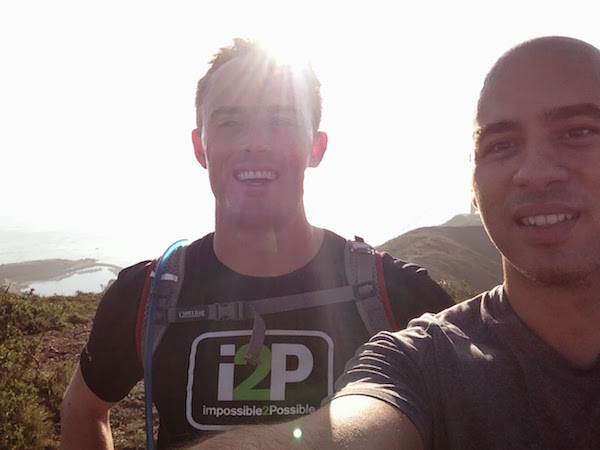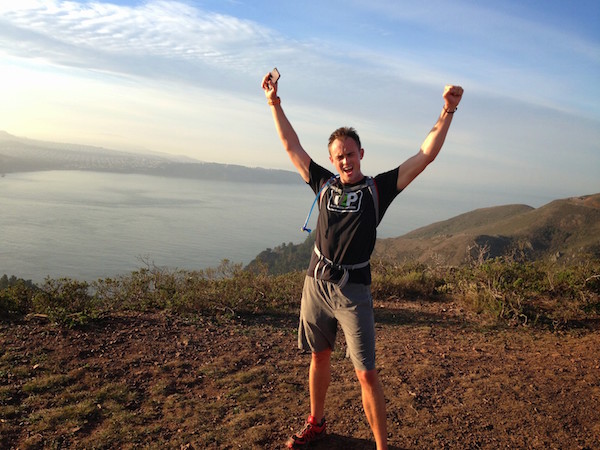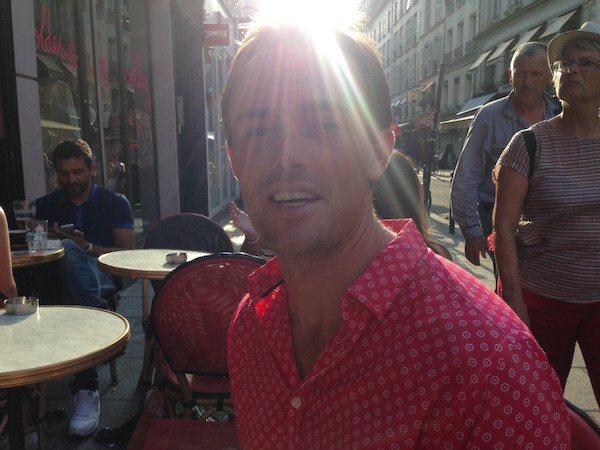A Primer on Australian Horse Racing and Betting – Part 1
|
by Tony Kelzenberg for “Brisnet.com" Written February, 2006 My name is Tony Kelzenberg, and I am a huge fan of International horse racing. For years I would read about the great horses from other countries in the Daily Racing Form. Then I started to go to web sites dedicated to international racing to get more information, but primarily sites dedicated to European flat racing, Sportinglife.com and Racingpost.com. Unfortunately, I had no access to the European racing channels and their racing would go off during the workday, so I had little chance to see most of the races, either live or by videotape. Over the years I have dabbled in betting Australian races Friday nights (i.e. Saturday afternoon in Australia) with fair success, and I’ve been asked to pass on my observations on Australian racing to BRIS readers. Australia has a GREAT racing tradition, highlighted most recently by super-mare Makybe Diva (Desert King), who won over $10,840,535 through her six year old season, and the top class Starcraft (Soviet Star), who won $2,330,958 in a multiple Group 1 winning career. Purses in Australia are very healthy, especially on Saturdays, when typical handicap races go for $40,000 to $50,000 and Group 1 races commonly have purses over $350,000. ALL races are on grass. This makes the race meets short in duration (so the grass does not get ‘worn out."), with racing moving every week or two from one venue to another.
Question: Which country has the largest purse in the world for a 2-year-old race?
Question: What is the most important 2-mile race in the world? As you can see from the questions above, the Australian racing program is quite varied, offering horses of disparate talents and abilities the chance to run in races suited to them. The main programs are juvenile sprinters (4 to 6 furlongs), 3 and up sprinters (5 to 7f), milers (7 to 9f), and stayers (10 furlongs and up). There are stakes just for fillies, but in most of the big races females have to run against the colts. In Australia, that may not be as big of a handicap as you might think. For example, in the last 21 runnings of the Group 1 Australia Stakes, 3-year-old fillies have beaten colts and older horses 6 times (with 3-year-old colts winning 5 more times). What I will try to point out to people reading this column that what we take for ‘gospel’ in the U.S. doesn’t always apply “down under," partly because of the differences in training, jockey skills, pedigrees and race track constructions. The next section will outline racing conditions and we will conclude in Part 2 with a brief analysis of leading trainers and jockeys in Australia and suggested betting strategies.
Betting Numbers vs. Post-Position Draw Note: the post-potion draw is SEPARATE from the Betting Numbers. Betting Number 1 could be in post 12. Betting Number 5 could be on the rail. You get the idea. The track program and/or the past performances will say who is in which gate.
Distances
Track Construction Some tracks go left handed (like we run in North America, counter-clockwise). Some tracks go right handed (clockwise). Flemington (Near Melbourne) is a special track that has a STRAIGHT 1200m course for sprints. In other words, Aussie horses need to be trained to handle any track configuration, and lead changes in the lane are not as important as in the U.S. Unfortunately, neither the past performances in the “official" Aussie program, or the past performances offered by BRIS, say whether a track is right handed or left handed (this history is documented in the DRF for foreign horses). Some horses prefer going one direction to the other. In addition, tracks usually have a slight hill in the stretch, which can give an advantage to stretch runners.
Workouts Case in point: God’s Own, in his lead up to the Group 1 Lightning Stakes, did not trial well. Leading Trainer Bart Cummings didn’t want to tip his hand early. God’s Own ran second, losing by a head. The trainer said he bet the horse heavy “each way," which is Aussie talk for betting to place, as the trainer expected a top two finish. Another case: Two weeks later, a contemporary of God’s Own, the hard knocking Paratroopers, was the “smart money" horse after his sharp trial before the Group 1 Australia stakes. Highly touted, he was a mysterious vet scratch at the gate! I have learned that usually Aussie horses are fit enough for the job. If you think your horse has the class, AND you think they are well meant (we’ll discuss this more in part 2 – betting strategies), they are very reliable horses and good bets. Don’t sweat the lack of workout information.
Pace
Trip In Australia, there an NO claiming races. Horses (if placed properly) run for the biggest purse they can win, without having to worry about being claimed. A horse with high earnings per start either won a big race a while ago, or even better, is a lightly raced horse with a high win percentage. An extra advantage is that the lightly raced horses usually will carry less weight (they haven’t established their top rating yet). The best-case scenario is a horse that is 4th or 5th top weight, but on the way up, faces a top weight and/or 2nd top weight horse that has seen better days. This is a good way to beat the weighting system, and find value at the windows.
Form
[ Sign-up ] [ Products & Prices ] [ Bookstore ] [ Track Info ] [ Library ] [ Tech Support ] [ F.A.Q. ] [ Member Services ] [ Contact Us ] |

Posted on October 15th, 2016
Names to Know at Keeneland
|
By Rich Nilsen “Keeneland should be the national park of racing," stated the late Howard Battle, who for four decades served as the Racing Secretary here. “The beauty of spring with the clean, clear air and the blooms of the pears, crab apples and dogwoods are excelled only in October by the yellows, golds, ambers, oranges and reds of the same flora. Besides the aesthetic atmosphere and multitudinous contradictions to most racing establishments – tree-lined parking, one-mile-and-a-sixteenth course, two finish lines, facing the sun, and being near the horses in their natural setting – we are still the best road to the Kentucky Derby and Oaks and now the Breeders’ Cup in the fall." Yes, few if any, tracks rival Keeneland in its beauty or history. In addition to its serene setting, Keeneland offers a unique meet. Handicappers should first understand how the 17-day condition book is written. With few claiming races written, the racing cards cater to the high profile barns that ship in from out of state for the short meet. The only turf races are allowance events and stakes. To many owners, winning a race at Keeneland is equivalent to capturing multiple events at another track. The TrainersMany barns point for this meeting and arrive loaded for bear. There are also many fine local trainers who fare exceptionally well during the short meet, and knowing who they are behooves the horseplayer. Data provided by Bloodstock Research Information Services, Inc. (www.brisnet.com). Amoss, Tom – has won 19% of his 59 starts over the past two years at Keeneland. One of the finest trainers in the Midwest, Amoss wins on any surface and any distance. High percentage moves to watch for include 1st off the claim and moving up in class. Arnold, George II - is a 24% winner from 46 starts and he excels with dirt sprinters. Arnold has won with 40% of his two-year-old starters over the past three years. Biancone, Patrick - has more synthetic surface experience than most of the trainers competing here as he has been based at Turfway Park's Polytrack. The Frenchman wins with all types but his specialty is with turf runners. Binder, Walter - has quietly won 30% of his 27 starts at Keeneland and has scored with 41% of his dirt sprinters. Binder is ultra dangerous with both layoff horses and runners making surface changes. Blasi, Scott - is the assistant trainer for Steve Asmussen. The Asmussen barn won 19% of their 163 starts since 2004 and is most dangerous with second time starters (36%). Clement, Christophe - has won with 26% of his starters. This top turf conditioner is a master at having layoff horses prepared to run their best race. Flint, Steve - has limited stock for this meet but has reached the winner's circle with 19% of his 21 starters. All of those winners have come in dirt sprints. Foley, Greg - veteran horseman has won at a healthy 26% clip from 23 starters. Foley has been a 38% winner with runners making their second start off a layoff. Frankel, Robert – has started 40 horses over the past two years and won with 28% of them. Frankel is over a 30% winner in two turn races, dirt or turf. Howard, Neil – is best with dirt routers and shippers. Howard has won 26% from 54 starts, many at nice prices. Kimmel, John - excels with runners making distance and surfaces switches. Kimmel has been a 32% winner from 31 starters. McGaughey, Shug - has won with 44% of his dirt sprinters but is dangerous with all types. Last year he parlayed a second place finish by Pleasant Home in the Spinster into a runaway longshot win in the Breeders' Cup Distaff. Motion, Graham - best known as an expert turf conditioner but he consistently wins with all types (26% overall). The Maryland-based horseman has won with 43% of his two-year-old starters. Mott, William – has won with 15% of his 59 starts over the past two years. Mott’s best profitable angle is first time Lasix horses. Pletcher, Todd - one of the nation's winningest trainers has scored 31% at Keeneland. The former D.Wayne Lukas protégé wins over 40% with both first time starters and layoff runners. Romans, Dale – has won 14% from 85 Keeneland starts but, surprisingly, has had only 7% winners in dirt sprints. Stewart, Dallas – a 14% winner from 86 starters overall is only 4% with turf runners. Zito, Nick - always get his stable in peak form as indicated by his 28% winners from 123 starters. The New York-native loves to drop claimers sharply in price and win (43%). Zito also excels with two year olds and turf-to-dirt runners. The JockeysAt meets such as Keeneland, the majority of the races are won by the high-profile riders. Rafael Bejarno and Robby Albarado are the ones most frequently having their picture taken in the winner’s circle. Leading riders at tracks such as River Downs often find winning much harder when the “big names" arrive in town. Bejarano won 30 races last fall, followed by Albarado with 16 wins. Shaun Bridgmohan rounded out the third spot by winning 14 races. But look for polytrack-proficient rider Julien Leparoux to be easily among the leading riders. Breeders’ Cup PrepsThe highlights of the fall meeting are the Juddmonte Spinster-G1 (Oct. 8), Queen Elizabeth II Challenge-G1 (Oct. 14), Lane’s End Breeders’ Futurity-G1 (Oct. 7), Shadwell Turf Mile-G1 (Oct. 7), Darley Alcibiades-G2 (Oct. 6), Phoenix Breeders’ Cup-G3 (Oct. 7), and the First Lady-G2 (Oct. 14), formerly known as the Winstar Galaxy. A first or second-place finish in the Juddmonte Spinster Stakes makes one a top contender for the Breeders’ Cup Distaff. No less than 10 winners have come out of the Spinster to win racing’s championship event for fillies and mares. The Keeneland meeting is an important stepping stone on the road to the Breeders’ Cup World Thoroughbred Championships. Twenty three runners have prepped here during the fall meet before winning a Breeders’ Cup event.
Summary
-- Rich Nilsen won a $51,000 allowance race during the 1999 fall Keeneland meet with his turf horse Lydio. Two years later Rich won the Keeneland handicapping contest, qualifying for Las Vegas where he finished 8th in the National Championship.
[ Sign-up ] [ Products & Prices ] [ Bookstore ] [ Track Info ] [ Library ] [ Tech Support ] [ F.A.Q. ] [ Member Services ] [ Contact Us ] |

Posted on October 15th, 2016
Pedigree potential and patient trainers
|
December 15, 2005 by Tim Holland When Pleasant Home (Seeking the Gold) won this year's Breeders' Cup Distaff (G1), it was a reminder that the ability to spot improving horses is one of the most valuable assets a horseplayer can own. By researching bloodlines, handicappers are able to speculate as to how much improvement, if any, a horse may still be capable of showing. While many sharp pedigree followers are able to recognize this "Pedigree Potential" with just a quick glance, an effective and easy to use tool is the Bloodstock Research American Produce Records, or APR, on CD-ROM. Many top class trainers, such as Bobby Frankel, Neil Drysdale and Richard Mandella, have an uncanny ability to successfully point horses for major races, maybe months down the road. They know the potential of their runners and are able to have them peak at exactly the right time. Shug McGaughey is another with this talent and his handling of Pleasant Home is a good example. Being a full sister to multiple Grade 2 winner Country Hideaway, and from a hugely successful family including champions Sky Beauty (Blushing Groom [Fr]), Dayjur (Danzig) and Gold Beauty (Mr. Prospector), Pleasant Home owned the potential, pedigree wise, to be the best in the nation. Freshened after a disappointing effort over an off track in the spring at Pimlico, the four-year-old miss was prepped for her fall races with two sprints, the latter one being a fast-closing runner-up finish behind the in-form Happy Ticket (Anet) in the Ballerina S. (G1). Following her next race, a good second in the Spinster S. (G1) at Keeneland, Pleasant Home drew off to an easy victory in the Distaff at odds of more than 30-1. McGaughey had known the ability of his filly, it was just a matter of bringing it all out at the right time. Unfortunately, it is rare that the pedigree handicapper is able to find a $60 winner coming from a high profile barn and more often one has to look a little deeper to find value. On Sunday, a good score could have been attained by spending 10 minutes or so with the APR CD looking a little deeper into the pedigrees of the field for the Damon Runyon S. at Aqueduct. Run at 1 1/16 miles and restricted to New York-bred two-year-old colts, the stakes drew a competitive cast of 11. While a few competitors owned some "black-type" in their immediate family, including Benlayla, an Aptitude colt out of the Grade 3-winning Pentatonic (Cure the Blues), none had a pedigree as eye-catching as Platinum Couple. Without even looking far, a tip as to the quality of his background should have been that he is by the successful Kentucky-based stallion Tale of the Cat who, at $65,000, easily commanded the highest stud fee of any of the sires of runners in this race. Closer inspection revealed that he is a half-brother to the Grade 2-placed stakes winner Dance Away Capote (Capote) and, more importantly, that his mother is a half-sister to the 1998 Horse of the Year and three-time champion Skip Away. For handicappers that use pedigrees and trainer angles as their main focus, rather than times and speed figures, it is important to pay attention to the smaller details. Indeed, additional research found that the trainer Joseph Lostritto and owners Tri-Star Stables purchased the mare, Ingot's Dance Away, carrying Platinum Couple for $60,000 at the 2002 Keeneland November Sale. By foaling the mare in New York the next spring, the Tale of the Cat colt became a registered New York-bred. Essentially, except by designation, Platinum Couple is a Kentucky-bred competing against the somewhat easier New York-bred fields. Another horse that became a "New York" bred in similar circumstances was Funny Cide (Distorted Humor), who was conceived at WinStar Farm near Lexington, Kentucky, but foaled in the Empire State. A slightly unrelated, but interesting, side note is that after foaling Platinum Couple, Tri-Star stables had Ingot's Dance Away bred to the New York-based stallion Good and Tough, which resulted in a two-year-old filly for 2006. Last year, the mare was bred to Jump Start before being sold again at Keeneland, this time bringing $165,000. After taking away the original purchase price ($60,000), and the two stud fees (Good and Tough, $6,000 and Jump Start, $5,000) this partnership was left with money to cover expenses and basically two "free" horses. Some good bloodstock work had been helped with a little luck when Dance Away Capote brought some more black-type to the family in 2004. Having ascertained that Platinum Couple owned the pedigree to be competitive in any New York-bred stakes, a look at his past performance lines revealed that he was still improving. The patient Lostritto rarely wins with first- or second-time starters, and Platinum Couple was no exception. While racing greenly in his first race and encountering trouble at the start in his second, he showed promise in both races while indicating that extra distance was needed. When stretched out to a mile for the first time, the gray colt encountered some bad luck when drawing the 13 post over a sloppy tack in the Sleepy Hollow S. He may also have bled in that unsuccessful effort as he reappeared with Lasix added for his next start, which resulted in a game win after a wide move. On paper, there appeared plenty of speed to set the race up for a closer, but that was not the case when the leaders ran the first six furlongs in 1:15. Platinum Couple, according to the BRIS chart, was "outrun early, rallied three wide approaching the stretch, responded when roused, finished fast from the outside and was clear under the line." The colt paid a healthy $35 for a $2 win bet and, with further improvement expected, the colt should be worth betting again, even if he makes the transition away from state-bred competition. One of the trickiest parts of handicapping is knowing how much emphasis to place on various factors. In the case of Platinum Couple, the public paid too much attention to his lower speed figures and less famous connections. However, they underestimated his pedigree potential and the trainer's patience.
[ Sign-up ] [ Products & Prices ] [ Bookstore ] [ Track Info ] [ Library ] [ Tech Support ] [ F.A.Q. ] [ Member Services ] [ Contact Us ] 
|

Posted on October 15th, 2016
Points of Call & Fractional Times Reference Chart
Points of Call & Fractional Times Chart
*Note: The shaded rows represent route times. Points of Call Chart
Fractional Times Chart
[ Sign-up ] [ Products & Prices ] [ Bookstore ] [ Track Info ] [ Library ] [ Tech Support ] [ F.A.Q. ] [ Member Services ] [ Contact Us ] 
| ||||||||||||||||||||||||||||||||||||||||||||||||||||||||||||||||||||||||||||||||||||||||||||||||||||||||||||||||||||||||||||||||||||||||||||||||||||||||||||||||||||||||||||||||||||||||||||||||||||||||||||||||||||||||||||||||||||||||

Posted on October 15th, 2016







